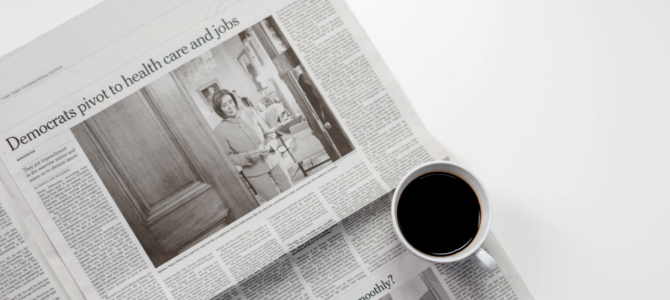The 2020 presidential election is still too close to call, but one thing is certain: it was not the Biden landslide the media predicted.
Not only did journalists and pundits underestimate the president’s ability to motivate voters for his base by hosting rallies around the nation, all of which were largely overlooked or treated as “superspreader” events, but they set their sights and hopes on down-ballot Democratic political candidates and races that ultimately failed.
Here are some of the best examples of the mainstream media’s most inaccurate reports and predictions for the 2020 election.
Gov. Gretchen Whitmer Is No VP
Politico’s Tim Alberta wrote a lengthy feature piece about Gov. Gretchen Whitmer in April, elevating her COVID-19 response and hinting that she was a likely pick for Biden’s VP.
“‘The Woman in Michigan’ Goes National,” the headline reads.
Alberta’s predictions about Whitmer’s rise to fame and a chance at becoming Biden’s vice presidential nominee choice, however, also fell flat. Now, Whitmer is known for a failed nursing home policy that caused vulnerable populations to die and tightening her state’s stringent COVID-19 re-opening policies.
Alberta’s Whitmer example followed the Washington Post’s cooing over Democrat Georgia gubernatorial candidate Stacey Abrams as a strong candidate for VP.
The article likened Abrams to “a runway supermodel,” picturing her in a cape and laying out high hopes for her future as a potential vice president and maybe even president, despite her previous political losses such as her race for Georgia governor.
In addition to missing the mark on who Biden was going to choose as his right-hand woman, multiple publications also completely underestimated Biden’s presidential nomination by the Democrat party. Instead, they featured shiny candidates like Michael Bloomberg and Beto O’Rourke, who they compared to former President Barack Obama as strong contenders for the 2020 ticket.
Phoenix Has Zero Hispanic Trump Supporters?
Alberta also wrote a feature in early October on Arizona’s Maricopa County and Hispanic voters there. Alberta’s article, however, failed to include any Phoenix voters who were voting for President Donald Trump. Instead, he amplified the calls of voters, especially Hispanics, who echoed the media’s narrative that Trump is a racist.
Alberta’s reporting completely underestimated the level of support for Trump as seen by the close margins still being determined in Maricopa as of Thursday, and Alberta’s high hopes for Democrat Hispanic turnout went unsubstantiated, as Trump increased his support in 2020 among Latino voters compared to 2016.
“Explosive turnout from Hispanics here is no longer about turning Arizona purple, as was the plan, but about turning it blue,” he wrote.
https://twitter.com/MattBruenig/status/1323825846365396992
The Elusive Blue Wave
Texas Monthly ran a series of articles before the 2020 election favoring a “blue wave” in Texas up and down the ballot, but their narrative proved to be wishful thinking.
An article published and featured on the magazine’s November issue cover argued that even if Trump took the state’s electoral votes in the race for the presidency, the GOP could lose the down-ballot races to the Democrats, partially due to the increase in the non-white population.
“The election has yet to be decided, but one result can already be called: the Texas Republican party has lost its ability to speak to much of the contemporary electorate,” the article asserted. “That the cultural and demographic changes in Texas would at some point catch up to the state’s politics is an eventuality that the GOP’s leaders have done everything in their power to delay.”
The New York Times, as well as other publications and networks, made the same mistake of labeling the state a surefire toss-up following the closeness of the 2018 midterms, assuming that key Texas races, even in the state senate and house, would go blue this year.
Despite the intensifying hope projected in these articles and the Democrats’ vigorous fundraising for their media darling candidates like Wendy Davis (who lost her race by more than six percentage points), GOP Texans won their races all around the state, keeping the Lone Star State red and gaining ground with Hispanics and other surprising groups along the way.
Outside of Texas, the same principle applied. CNN and others peddled analyses suggesting Democrats would gain seats in the House of Representatives. But so far, Republicans are taking big leaps, and shrinking the Democrats’ majority with many GOP women winning victories.
The Media’s Preferred Polls
In addition to feature pieces and profiles that did not age well, the media showed its complete and utter incompetence to correctly and fairly assess what Americans are thinking in 2020 through their promotion of incorrect polls.
Not only did most of the projected polling that they showcased on-air and in articles fully underestimate Trump’s wins in battleground states such as Florida, Iowa, and Ohio, but many of them claimed Biden would win in certain key states by a well-defined margin. On day three of election week, still lacking results from Nevada, Georgia, North Carolina, Arizona, and Pennsylvania, this assumption was easily proven wrong.
As Federalist Senior Editor Mollie Hemingway pointed out, it’s not that all the polling was inaccurate, but that the media intentionally excluded any polls that didn’t project their preferred narrative.
This inexcusable and avoidable mistake was a repeat of 2016 and reaffirms many conservatives skepticism in the mainstream media’s ability to accurately and effectively understand voters and to cover a wide range of opinions and facts.









